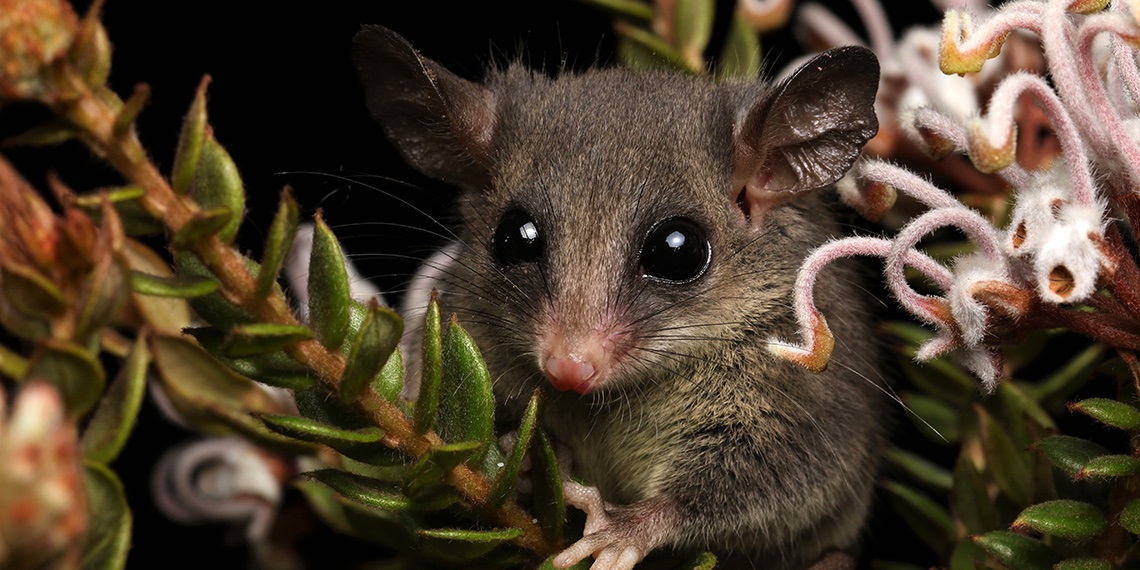Eastern pygmy-possum

Appearance
The Eastern Pygmy-possum (Cercartetus nanus) is small and often mistaken for a mouse; their body weight ranges between 15 - 43 grams. They have rounded heads and large eyes and large forward pointed ears. Their fur is fawn/light brown and white underneath. Like the Common Ringtail Possum (Pseudocheirus peregrinus) they have prehensile tails used to assist in climbing.
Distribution and habitat
In NSW, the Eastern Pygmy-possums distribution extends from the east coast, west to Dubbo, Parkes and Wagga Wagga. They live in a variety of habitats including rainforest, sclerophyll forest, woodland and heath, often occupying tree stumps and hollows. Their small size, nocturnal habits and occupation of multiple habitats makes them very difficult to spot so not much is known about their extent in the Ku-ring-gai LGA.
Diet
Eastern Pygmy-possums feed primarily on nectar and pollen from banksias, eucalypts and bottlebrushes. They’re important pollinators of these plants. When flowers are scarce they also eat fruit, seeds and insects.
Breeding
They make small, round nests by lining tree hollows, tree forks or abandoned bird-nests with shredded bark. Young are born whenever food is abundant, often between late spring and autumn. Depending on the species, the mother pygmy possum gives birth to a litter of three to eight young. As a marsupial she raises her undeveloped young in a pouch. Here they suckle until weaned at about two months old.
Conservation status
Listed as Vulnerable under the NSW Biodiversity Conservation Act 2016. Threats to the Eastern Pygmy-possum include habitat loss and fragmentation, predation from feral species such as cats, foxes and dogs and mortality on roads.
Did you know?
During winter or periods of high stress or low resources, Eastern Pygmy-possums will enter a period of torpor, conserving energy by curling up, folding in their ears and lowering their internal temperature and metabolic rate. This can last for a few hours or for days on end.
Eastern Pygmy Possum Monitoring Program
Council’s Natural Areas Team conduct surveys in collaboration with volunteers to improve our understanding of:
- Distribution and abundance of EPP.
- Habitat preference.
- Provide supplementary habitat in areas where hollows are scarce.
- Engage the community and decision makers in biodiversity conservation.
- Promote better management of habitat and the consideration of EPP in development, or other management/bushland management activities.
The program has two components, remote cameras, used to capture information on Pygmy Possum presence/absence and provide details of resource requirements and nest boxes which provide an insight into presence/absence, seasonal movements and breeding.
Program results
The program has been running since 2015, using remote cameras and monitoring of nest box activity. The program has contributed greatly to our understanding of Pygmy-possums in the LGA, including continued evidence of successful breeding.
Eastern Pygmy Possum Program Report 2024(PDF, 6MB)
Program reports from 2015-2023 available upon request, please contact naturalareas@krg.nsw.gov.au
View Eastern Pygmy Possum video(MP4, 2MB)
References
Environment NSW
Australian Museum
Bush Heritage